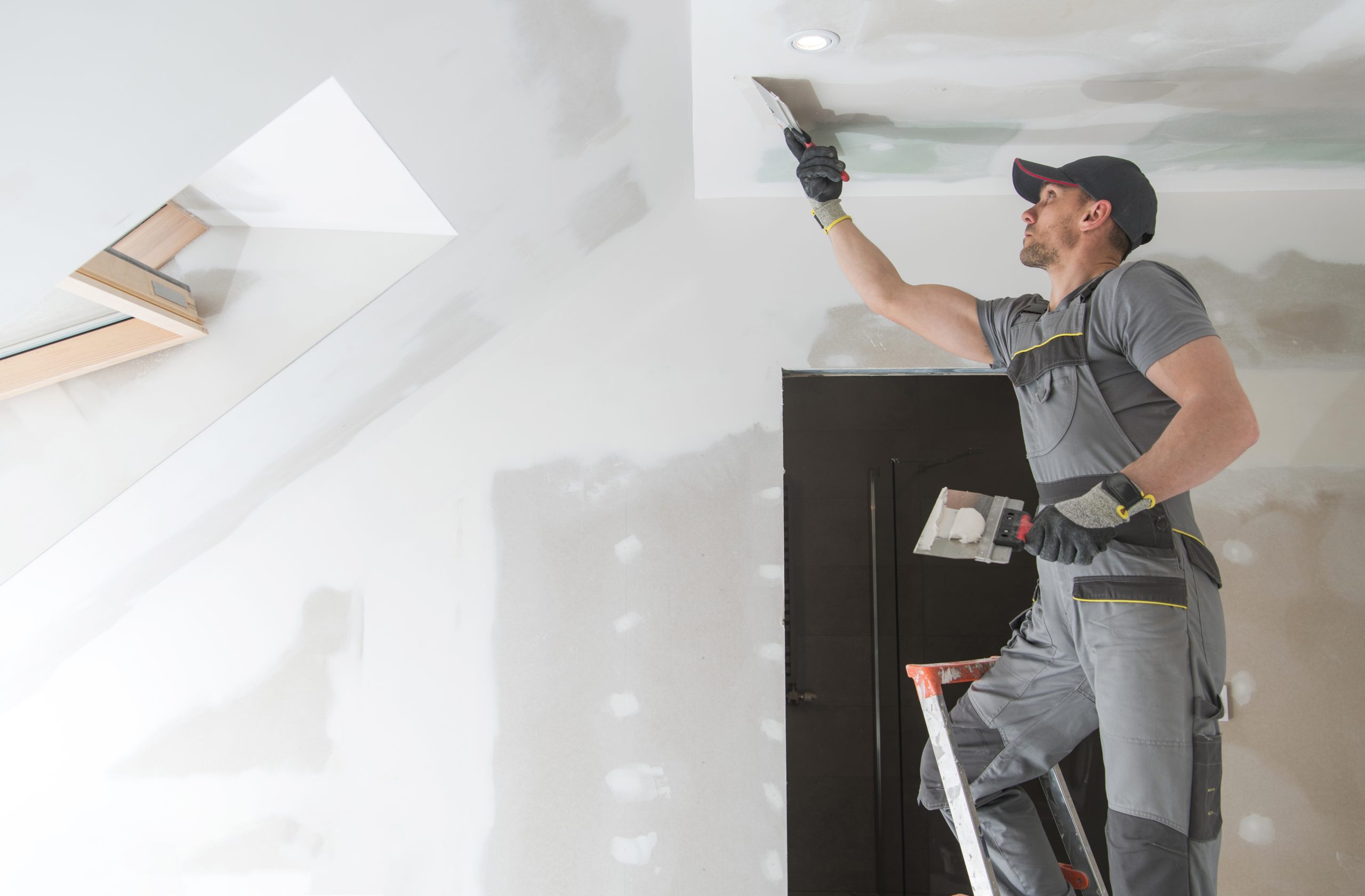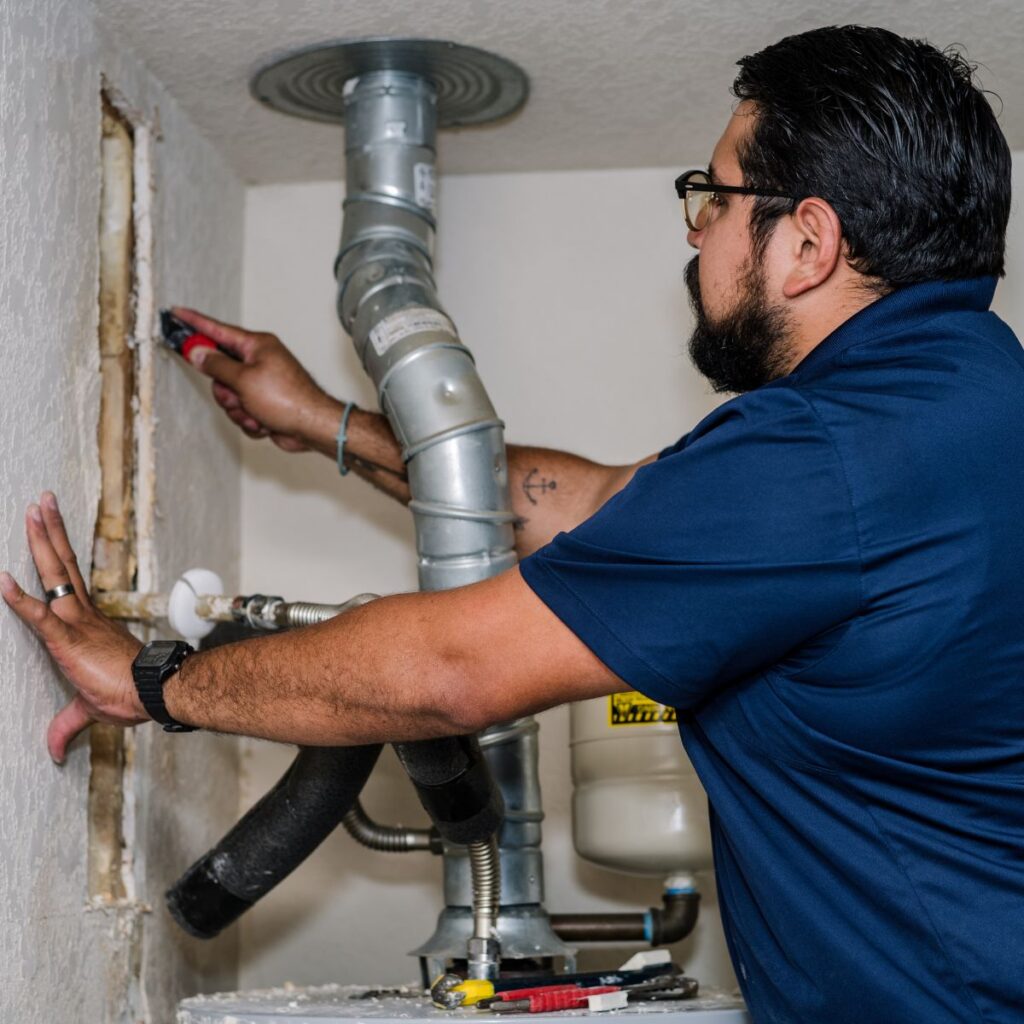Upgrade your interiors using Drywall Repair Ogden UT and professional painting styles.
Wiki Article
Crucial Tips for Effective Drywall Repair Work and Setup Methods
Reliable drywall repair work and installation needs a careful approach. Recognizing the sorts of drywall and having the right tools is crucial. Appropriate strategies and precise dimensions can greatly impact the result. Many overlook important actions like taping and fining sand, which can make or damage the last appearance. As tasks advance, usual challenges may emerge that call for interest. Discovering these suggestions can bring about an extra refined and successful coating.Recognizing Different Types of Drywall
Recognizing the various sorts of drywall is vital for any successful repair service or installation job. Drywall, frequently understood as plaster board, comes in numerous selections tailored for details applications. Requirement drywall is the most extensively utilized type, suitable for general interior wall surfaces and ceilings. Moisture-resistant drywall, usually green in shade, is made for areas prone to humidity, such as shower rooms and kitchen areas. Fireproof drywall, normally tinted pink or purple, is crafted to endure greater temperature levels and is typically made use of in garages or near heating systems. Additionally, soundproof drywall helps in reducing noise transmission, making it suitable for multi-family homes or videotaping studios. Specialty drywall, like concrete board, is used in wet locations like showers or bathtub surrounds. Recognizing these types aids in picking the ideal material for each and every job, making sure durability and effectiveness out of commission or new setups.Necessary Devices for Drywall Repair Service and Installment
Having the right devices is essential for efficient drywall fixing and installment. A top quality utility blade is vital for reducing drywall sheets specifically. A drywall T-square assists guarantee straight sides, while a taping blade is needed for applying joint compound efficiently over joints. In addition, a drywall saw enables reducing out damaged sections or suitable drywall around fixtures.For hanging drywall, a power drill with drywall screws is essential, as it enables secure and fast installation. A level is also important to confirm that the drywall is straight and appropriately aligned. A fining sand block or pole sander is necessary for raveling joint substance once it has dried out. Lastly, a gauging tape is essential for exact dimensions, preventing waste and making sure an appropriate fit. Outfitted with these devices, individuals can take on drywall jobs efficiently, resulting in professional-looking outcomes.
Step-by-Step Guide to Fixing Holes and Cracks
When attending to openings and fractures in drywall, having the right devices and products is crucial for a successful repair service. This guide describes the essential things and gives a clear, detailed process to properly restore the surface. Comprehending these elements will certainly help assure a seamless surface and lasting results.Devices and Materials Needed
A well-appointed toolkit is vital for effective drywall repair and installment. Key tools include an utility blade for reducing drywall, a measuring tape to assure accurate sizing, and a drywall saw for larger holes. A putty knife is essential for applying joint compound efficiently, while a fining sand block or pole sander assists accomplish a smooth finish. For patching, a roll of fiberglass harmonize tape or paper tape is necessary to enhance joints. Additionally, a drill and screws are required for securing brand-new drywall pieces. Essential products include joint substance, guide, and paint to complete the repair. Having these tools and products on hand ensures a smoother, a lot more efficient repair process, generating professional-looking outcomes.Repair Work Refine Actions
Repairing holes and cracks in drywall needs an organized approach to ensure a smooth coating. First, the location bordering the damage needs to be cleaned extensively to eliminate dirt and particles. Next off, for tiny fractures, a putty blade is used to apply a joint substance evenly over the area. For larger holes, a patch is needed; the harmed area is eliminated, and a new piece of drywall is suited location, secured with screws. As soon as the patch is in setting, joint compound is used to mix the edges. After drying, fining sand the location smooth is important. Finally, the repaired surface area should be keyed and repainted to match the surrounding wall surface, ensuring an unnoticeable repair work.Strategies for Installing Drywall Panels
Setting up drywall panels requires cautious planning see here now and accurate execution to ensure a expert and smooth finish. It is vital to gauge the wall area precisely and reduce the panels to fit, guaranteeing that they line up with the studs. Positioning the panels flat is commonly advised, as this can boost the architectural honesty and lower the variety of joints.Utilizing drywall screws, installers must protect the panels every 16 inches along the studs, guaranteeing a firm hold. It is important to avoid overdriving the screws, which can harm the paper surface area. For sides and edges, using an energy knife allows for clean cuts and a tight fit.

Ending Up Touches: Insulation, Mudding, and Sanding
Once the drywall panels are securely in position, the next vital action involves the finishing touches of taping, mudding, and sanding. Insulation is essential for creating a smooth shift go right here between panels and concealing joints. A top quality drywall tape, either paper or fiberglass harmonize, must be used over the joints, ensuring it sticks correctly to the mud that will certainly be applied following.Mudding, or applying joint compound, complies with the taping procedure. This substance fills up gaps and smooths out the surface. An initial coat should be used generously, feathering the edges to mix with the drywall. After the initial coat dries out, subsequent layers may be needed for a remarkable surface.
Ultimately, fining sand is required to achieve a smooth surface area. A fine-grit sandpaper ought to be made use of to delicately ravel any type of imperfections. Treatment should be required to avoid over-sanding, which can damage the drywall - Drywall Installation Ogden Utah. Effectively carried out, these finishing touches develop a specialist look prepared for paint
Tips for Maintaining Your Drywall After Setup
Maintaining drywall after installment is important to protecting its look and architectural stability. Routine cleansing is required; dust and dust can build up, so gentle cleaning with a wet fabric is advised. Home owners must additionally examine for any kind of indications of wetness or mold and mildew, particularly in high-humidity areas like restrooms and cooking areas. If any kind of damage happens, it's important to address it immediately to avoid further concerns.Using furniture pads can assist prevent scrapes or damages from heavy products. In addition, repainting the drywall with a top notch, washable paint offers an added layer of protection and makes future cleaning much easier. Avoid making use of unpleasant cleansers or devices, as these can harm the surface area. website link Ultimately, preserving a secure indoor climate with proper moisture levels will certainly help stop buckling or cracking with time. By following these ideas, one can assure that drywall continues to be in exceptional condition for many years to find.
Often Asked Concerns
For How Long Does Drywall Take to Completely Dry After Installation?

Can I Install Drywall Over Existing Drywall?
Yes, drywall can be installed over existing drywall, yet it is important to ensure the underlying surface is safe and effectively prepared. This technique can improve insulation and decrease installation time, though it might add weight.What Is the Finest Method to Soundproof Drywall?
The most effective method to soundproof drywall includes making use of specialized soundproofing products, such as resistant networks, acoustic caulk, and sound-dampening drywall. These strategies effectively lessen sound transmission between areas, improving overall acoustic performance in living rooms.Just how Do I Choose the Right Drywall Density?
To select the right drywall density, take into consideration the application and place. Criterion domestic walls generally utilize 1/2 inch, while ceilings or specialized locations might need 5/8 inch for additional stamina and soundproofing abilities.Are There Eco-Friendly Drywall Options Available?
Yes, green drywall choices are available. These include items made from recycled products, plaster boards with low unstable organic compounds (VOCs), and those using lasting production procedures, providing environmentally-conscious selections for building and construction and improvement tasks.Having the right devices is essential for efficient drywall repair work and installation. For hanging drywall, a power drill with drywall screws is indispensable, as it enables secure and fast setup. Trick devices consist of an energy knife for reducing drywall, a tape step to assure exact sizing, and a drywall saw for bigger openings. Yes, drywall can be installed over existing drywall, but it is vital to assure the underlying surface area is safe and adequately prepared. The finest way to soundproof drywall entails using specialized soundproofing products, such as durable channels, acoustic caulk, and sound-dampening drywall.
Report this wiki page